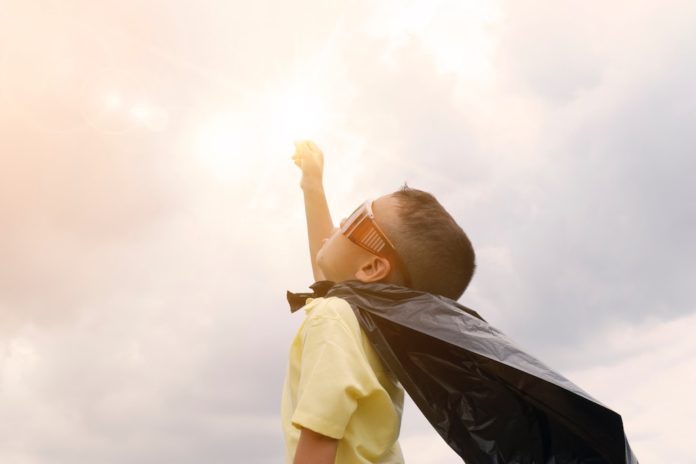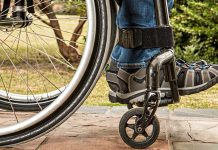Teaching your children to be prepared is a must, but it does not have to be a frightening process. What type of everyday carry items your kids pack with them depends on several variables: age, maturity, and training are chief among them.
Everyday carry items for kids (and the rest of us) involves not just what they can tote in a backpack or purse, but what should also be on their person at all times. If you children are not homeschooled, the items carried both with your children and on them will have to be selected far more carefully, or you will be getting a phone call from a very unhappy principal.
Even homeschooled children should be equipped and trained on EDC items. Part of the glorious freedom of homeschooling is devising a curriculum that gets kids out into nature and engaging in valuable hands-on educational and vocational training. Accidents and emergencies do not always happen when mommy or daddy are nearby, or are capable of helping. If an intruder rushes into your home, the homeschooled child must be trained how to respond and have the tools necessary to hide or fight – or both.


In addition to the self-reliance lifestyle the child’s family is engaged in, joining formal groups, like 4-H, Boy Scouts, American Heritage Girls, Camp Fire, or Frontier Girls, will also teach a host of outdoor and survival skills to young people. Skills are the best thing you can arm your children with. They must learn how to respond to an emergency, a threat, when to defy authority and follow the SHTF plan you have taught them, and how to communicate and find their way to safety without adult guidance.
If the children panic or are afraid to defy the non-prepping adults in a position of power over them at school, even a fully stuffed backpack of top-notch EDC items will not save their lives.
Teaching children responsibility should the top priority when developing an everyday carry plan for them. Kids lose things, sometimes a lot. If the children go to school, practice, or a club meeting and forget something they need, do not run and fetch it for them. Forgetting a page of homework or cheerleading shoes might seem like the end of the world to them, but it is not. Forgetting to carry and keep a flashlight in good working order, on the other hand, just might be.
Children, at least until they hit junior high, are going to be too small for a lot of gear, making the decision about what they do carry, all that much more important. Decisions will have to be made and some quality survival tools left out of the pack.
Related: How to Teach Your Kids About Preparedness
Toddlers
Children at this age love to mimic or model the actions of their parents and want to be little helpers around the home. Encourage this behavior and start teaching them to carry a small backpack designed for their age or a purse, with them.


Child-safe flashlights and lanterns and whistles are fairly inexpensive and could be part of their first everyday carry bag. When birthdays and Christmas rolls around, purchase some pretend to camp equipment that can be played with both indoors and out, to foster their interest in such activities and model for them how to use the gear.
I made pretend tents using tablecloths that go over folding tables for all of our grandkids. Out of felt, I made a fire place with a stuffed “flame” and logs, an “ax” to chop the logs (used a toilet paper roll and pipe cleaners to give it shape and sturdiness) and a foldable pond with fish and a fishing pole. I used pipe cleaners and a paper towel roll and put magnets inside a stuffed hook and inside the fish.
Many hours of outdoor skills learning fun has been had with the tents. I have also used felt and cardboard to make a pretend first aid kit, complete with bandages, for the make-believe camp outs in the playroom.
Preschool and Kindergarten Everyday Carry Items for Kids
1. Flashlight – a small one that can be kept in a pocket or attached to a belt loop is ideal.
2. Granola bar, energy bar, or similar type of lightweight snack with a long shelf life
3. Juice box
4. Wallet with essential identification and contact information inside and an amount of money they can learn how to satisfy a small and immediate need.
5. Bandaids
6. Walkie Talkie – yes preschool children can be taught how to use one of these.
7. Emergency Mylar blanket
8. Whistle
9. Antibacterial lotion
Elementary School Everyday Carry Items for Kids
1. Flashlight
2. Wallet with the same essential information as carried by younger children, and some cash and/or coins.
3. Walkie talkie or cellphone
4. Extra batteries and/or charged portable charging device for the cellphone
5. Folding paper map or guide sheet to help get them to a designated space location or home – preferably by more than one route.
6. A coded guide to a hidden survival cache near their school.
7. Small first aid kit, including a quick clot bandage
8. Emergency Mylar blanket
9. Whistle – the type that hangs on a lanyard and includes a compass would be a great space saver.
10. Compass
11. Watch
12. Compact folding binoculars
13. Paracord bracelet
14. Emergency snack items, juice box, bottle of water, and lightweight food items.
15. Multi-tool – Also known as a Leatherman. This tool will most likely get the children in trouble at school if they are caught with it.
16. Antibacterial lotion
17. Seasonal accessories for an extended stay at school or a long walk home, such as a hat, gloves, Bandana, extra pair of socks, or a scarf.
18. Pepper spray – and the maturity to understand it is not a toy as well as when and how to use it. This would involve teaching the child about wind direction, too.
19. Lifestraw – at least for upper elementary age children and younger ones mature enough and trained in its usage.
20. Sunglasses and individual tube of sunblock and chapstick
Related: Teach Your Kids These Survival Techniques!
Junior High and High School Everyday Carry Items


1. Wallet with money in it – this will get trickier as the kids get older. Tell them you will be checking their wallet every evening to make sure their emergency coins or cash are stil inside.
2. Key – a house key or keys to a safe house.
3. Compass
4. Flashlight
5. Whistle
6. Chapstick
7. Tactical pen – probably a violation of school policy, as well.
8. Paracord bracelet
9. Folding compact binoculars.
10. Watch
11. Antibacterial lotion
12. First Aid kit with more advanced items than they carried at a younger age, but still lightweight and portable.
13. Multi-tool or a pocket knife – again, these type of items will land your child in hot water if they are not homeschooled.
14. Matches or lighter and tinder
15. Pepper spray or stun gun
16. Walkie talkier or cellphone
17. Extra batteries and/or charged portable charging device for the cellphone
18. Seasonal accessories
19. Folding map and coded sheet directing them to hidden survival caches
20. Life straw
21. Sunglasses and a small tube of sunblock
22. An insect repellent wristlet
23. Handcuff key
24. Extra clothing – A few clothing items could be taken to school one day at a time, especially thermal underwear and a spare coat, and be stored in the child’s locker, so they could layer and stay warm is the SHTF during the rainy season or winter months.
If a child of any age wears glasses or contacts, or take medication on a daily basis, these needs should be addressed in their EDC as well. Even if the child wears contacts, taking a case filled with saline and a spare pair of glasses in a case everywhere they good is a great habit to get into.
Related: How to Talk to Kids About Prepping and Survival
The type of clothing and footwear the children leave the home in should also be addressed. Girls may be opposed to wearing pants instead of cute skirts to school, or pants with a tactical flare that have a lot of pockets. Purchasing a cute purse that she learns to always keep with her, would enhance her on person everyday carry preparedness level.
Even the girlie girls in our family practically live in cowboy boots – we all grew up country. Wearing boots, especially if they are steel-toed, will give both boys and girls an added edge if forced to depend themselves and the ability to remained sure-footed when chased or traversing rugged terrain.





















